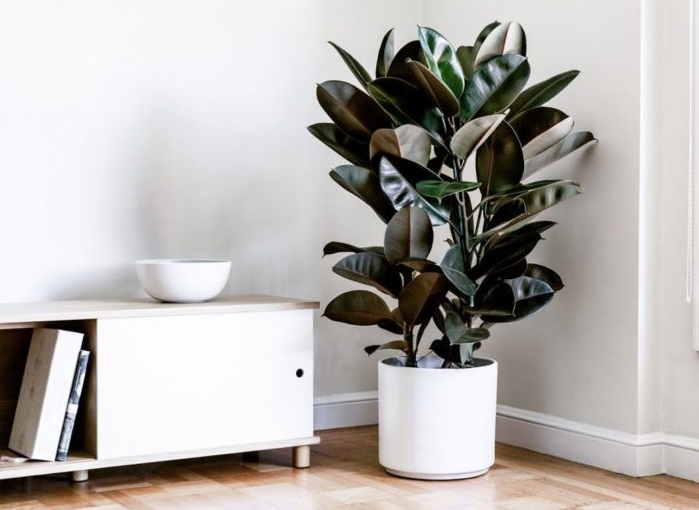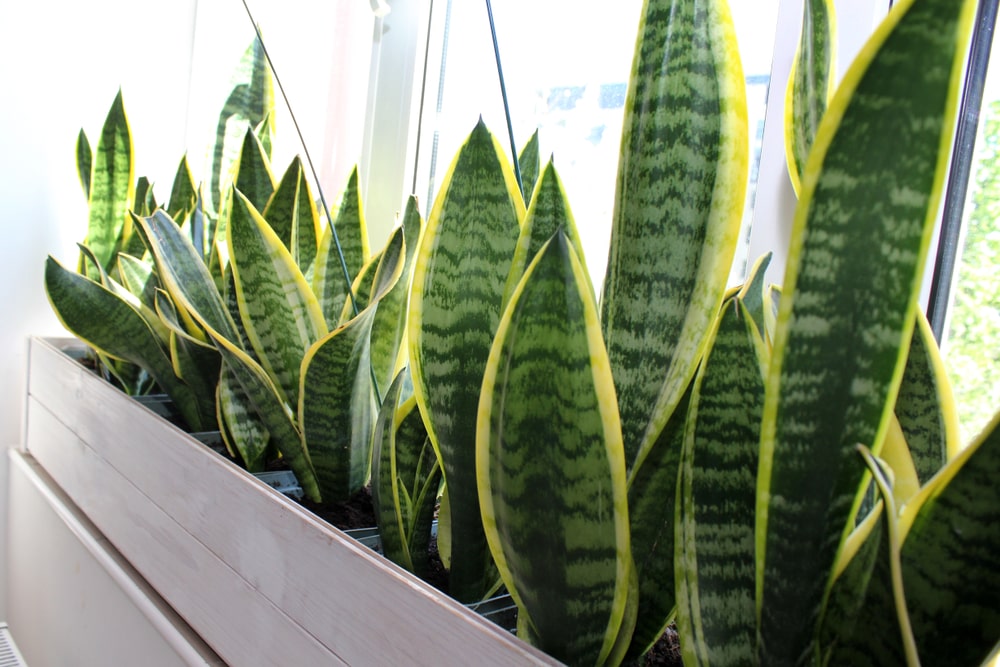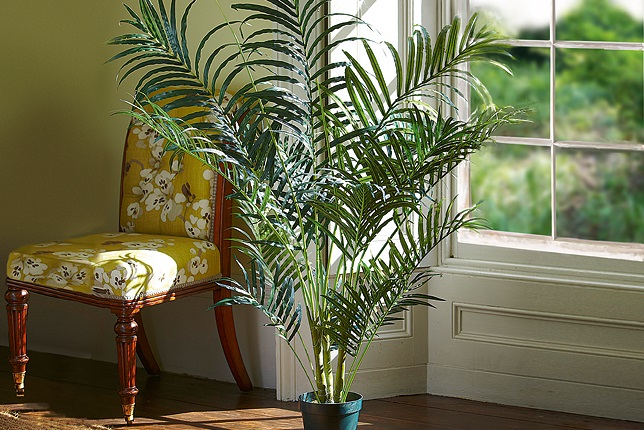There are various reasons why to bring plants into the apartment or office: Studies suggest that plants can have a positive effect on our mood and productivity, also enhance concentration and reduce stress; Moreover, they can help to clean air in indoor spaces.
In 1989 study conducted by NASA discovered that plants can absorb harmful toxins from the air, especially in enclosed spaces with little airflow.
With the benefits, energy-efficient, modern buildings brought some challenges. One of these side effects is less airflow. Lack of airflow allows for indoor air pollution to build up and cause health issues like asthma or sick building syndrome.
Even more, modern furnishings, synthetic building materials, and even carpets may carry more chemicals than expected.
These chemicals can make up to 90 percent of indoor air pollution. Below are the plants, that besides their beautiful characteristics can clean air, are said to remove chemicals and are easy to take care of.

Spider plants (Chlorophytum comosum)
Also known as air plants, spider plants grow quickly and look great in hanging baskets, especially in your work space. Sometimes they even produce lovely white blossoms.
Spider plants have more than 200 species and many of them can survive a little forgetfulness from us. Is said to eliminate formaldehyde and xylene.

Dracaenas
Dracaenas are a newbie green thumb’s dream. This large group of houseplants comes in all shapes, sizes, and colors.
Choose from the tall corn plant, which has interesting markings, or the rainbow plant, which comes in bright purple. Eliminates: formaldehyde, xylene, toluene, benzene, trichloroethylene.

Golden pothos (Epipremnum aureum)
Also known as devil’s ivy, this plant may be as close as plants can get to indestructible. It flourishes in a variety of conditions and can grow up to 8 feet long. It’s also considered one of the most effective indoor air purifiers for removing common toxins.

Areca Palms (Chrysalidocarpus lutescens)
This small plant from Madagascar is easier to grow outdoors. But if you have space with bright filtered light, its gracefully arching leaves will make a pretty addition to the room.
Bamboo palms (Chamaedorea seifrizii)
This sturdy plant is known for its easy elegance and height. It likes bright, but not direct sunlight, and does have preferences about its care. Bamboo palms also transpire a healthy dose of moisture into the air, making it a welcome addition in dry winter months.
English ivy (Hedera helix)
This evergreen climbing plant is well adapted to indoor conditions. Different varieties will prefer different light situations, from bright, indirect light to low-light spaces.
It’ll look especially picturesque growing from a hanging basket or around your windowsill. Eliminates: benzene, carbon monoxide, formaldehyde, trichloroethylene, and more.

Rubber Tree(Ficus elastic)
This plant can come in different colors, sizes and shapes. Besides the fact that they are evergreen, look beautiful in any interior and are very trendy nowadays, the most important is they produce lots of oxygen and it is considered that they even can get rid of formaldehyde.
Rubber plants are evergreen trees from India. Their roots grow upwards and often become entwined around the plant’s trunk, forming interesting shapes. These plants love bright, filtered light and a little attention now and then.
Chinese evergreen (Aglaonema)
These evergreen perennials are native to tropical forests in Asia. In addition to looking patterned and colorful, these pretty plants can remove many common toxins.
But caring for these plants may require extra attention. Eliminates: benzene, carbon monoxide, formaldehyde, trichloroethylene, and more.

Peace lilies (Spathiphyllum)
In the 1980s, NASA and the Associated Landscape Contractors of America discovered that peace lilies were one of the top three plants for removing common household toxins, even ammonia. Eliminates: formaldehyde, benzene, trichloroethylene, xylene, ammonia, and more Top of Form.

Sansevieria
Easy to care for and happy in all kinds of lighting situations, Sansevierias will remove benzene, formaldehyde, trichloroethylene, and xylene from the air.
Kimberly Queen ferns
Less prone to shedding than its cousin the Boston Fern (which will also clean the air), a Kimberly Queen Fern will filter xylene and formaldehyde













